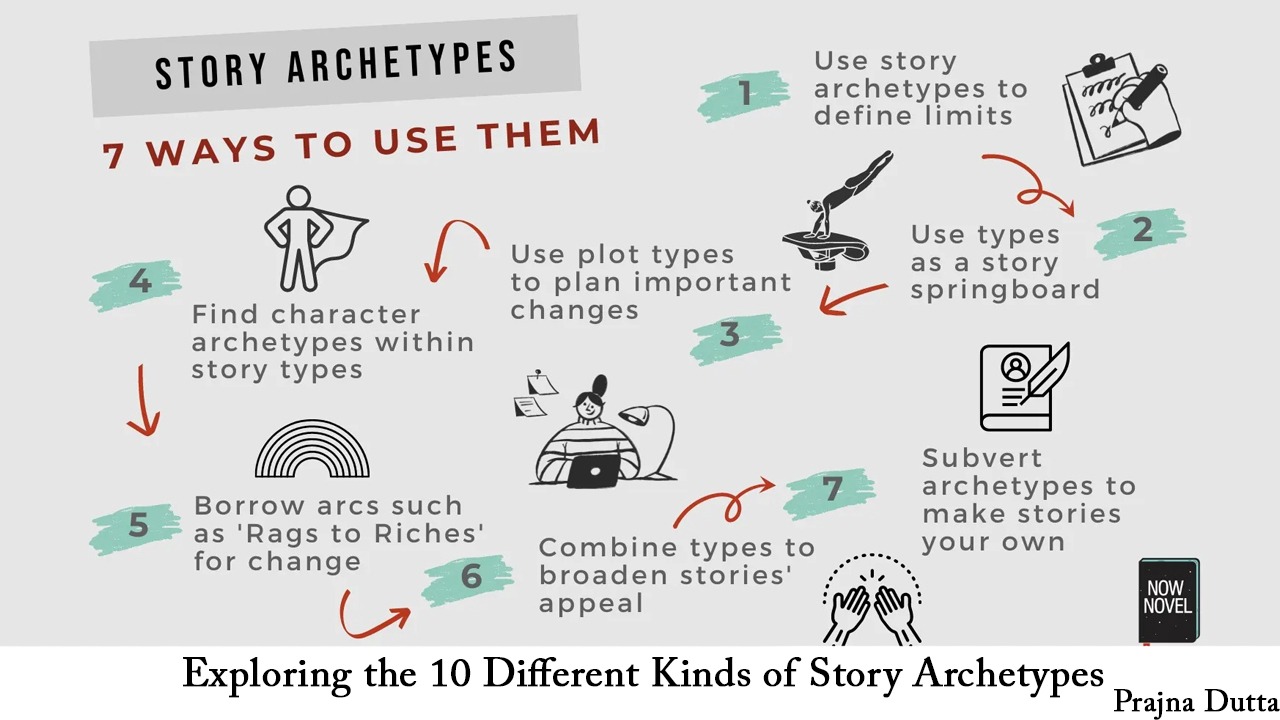Storytelling is an ancient art form that has captivated and entertained people for centuries. One of the fascinating aspects of storytelling is the existence of archetypal plots that have been used repeatedly across different cultures and time periods. These story archetypes provide a framework for narratives and continue to resonate with audiences around the world. In this article, we will explore 10 different kinds of story archetypes that have been prevalent in literature, film, and other forms of storytelling.
1. Overcoming the Monster:
This archetype involves a protagonist who must confront and defeat a powerful, often supernatural, antagonist or force. The plot typically revolves around the hero's journey to overcome the threat and restore peace to the world. Classic examples of this archetype include the myth of Perseus and the slaying of Medusa, as well as modern interpretations such as J.K. Rowling's "Harry Potter" series.
2. Rags to Riches:
The rags to riches archetype follows a character's journey from poverty or obscurity to wealth, success, or high status. The protagonist typically faces numerous trials and tribulations before achieving their ultimate triumph. This archetype is exemplified in stories like Charles Dickens' "Great Expectations" and the classic fairy tale of "Cinderella."
3. The Quest:
In the quest archetype, the protagonist embarks on a journey to obtain a valuable object, achieve a significant goal, or solve a pressing problem. Along the way, the hero encounters various challenges and adversaries, ultimately undergoing personal growth and transformation. Examples of this archetype can be found in epic tales such as J.R.R. Tolkien's "The Lord of the Rings" and the legend of King Arthur.
4. Voyage and Return:
This archetype involves a protagonist who ventures into a strange and unfamiliar world, undergoes a series of trials, and eventually returns home with newfound wisdom or treasure. Stories like Lewis Carroll's "Alice's Adventures in Wonderland" and Homer's "The Odyssey" exemplify the voyage and return archetype.
5. Comedy:
The comedy archetype revolves around humorous and lighthearted narratives that often feature mistaken identities, misunderstandings, and a happy resolution. This archetype is commonly found in plays by William Shakespeare, such as "A Midsummer Night's Dream" and "Twelfth Night."
6. Tragedy:
Tragedies explore the downfall of a protagonist due to a fatal flaw or external circumstances, leading to their ultimate demise. These narratives typically evoke a sense of pity and fear in the audience. Classic examples of the tragedy archetype include Shakespeare's "Hamlet" and Sophocles' "Oedipus Rex."
7. Rebirth:
The rebirth archetype centers on a character's transformation or redemption, often following a period of suffering or moral conflict. Through their experiences, the protagonist undergoes a profound change and achieves a sense of renewal. Stories like Charles Dickens' "A Christmas Carol" and F. Scott Fitzgerald's "The Great Gatsby" embody the rebirth archetype.
8. The Hero's Journey:
Popularized by scholar Joseph Campbell, the hero's journey archetype outlines a universal narrative pattern that features a call to adventure, a mentor figure, trials and tribulations, and a return with newfound wisdom. This archetype is evident in numerous myths, legends, and contemporary works, including George Lucas' "Star Wars" saga.
9. The Sacrifice:
The sacrifice archetype revolves around a character who willingly gives up something of great value, often for the greater good or to achieve a noble cause. This archetype is frequently associated with themes of selflessness, martyrdom, and redemption. Examples of the sacrifice archetype can be found in stories such as "Les Misérables" by Victor Hugo and J.K. Rowling's "Harry Potter" series.
10. The Underdog:
The underdog archetype features a protagonist who is at a significant disadvantage or faces overwhelming odds but ultimately triumphs against all expectations. These narratives often inspire hope and resilience in the face of adversity. Classic examples of the underdog archetype include "Rocky" and "The Karate Kid," as well as literary works like "David and Goliath" from the Bible.
These 10 story archetypes represent timeless narrative structures that have captivated audiences across cultures and generations. While individual stories may incorporate elements from multiple archetypes, recognizing these underlying patterns can deepen our understanding of the universal themes and motifs that resonate with human experience. Whether in ancient myths, classic literature, or contemporary blockbusters, these archetypes continue to serve as the building blocks of compelling and enduring storytelling.
By drawing on these archetypes, storytellers can create narratives that speak to fundamental aspects of the human condition, offering insight, entertainment, and emotional resonance. Understanding these archetypes can also empower writers and creators to craft narratives that resonate with audiences on a profound level, transcending cultural and temporal boundaries.
In conclusion, the exploration of these 10 different kinds of story archetypes offers a valuable framework for understanding the power and universality of storytelling. As we continue to explore and create new narratives, these archetypes serve as a reminder of the enduring nature of human storytelling and the timeless themes that continue to captivate and inspire us.

Comments